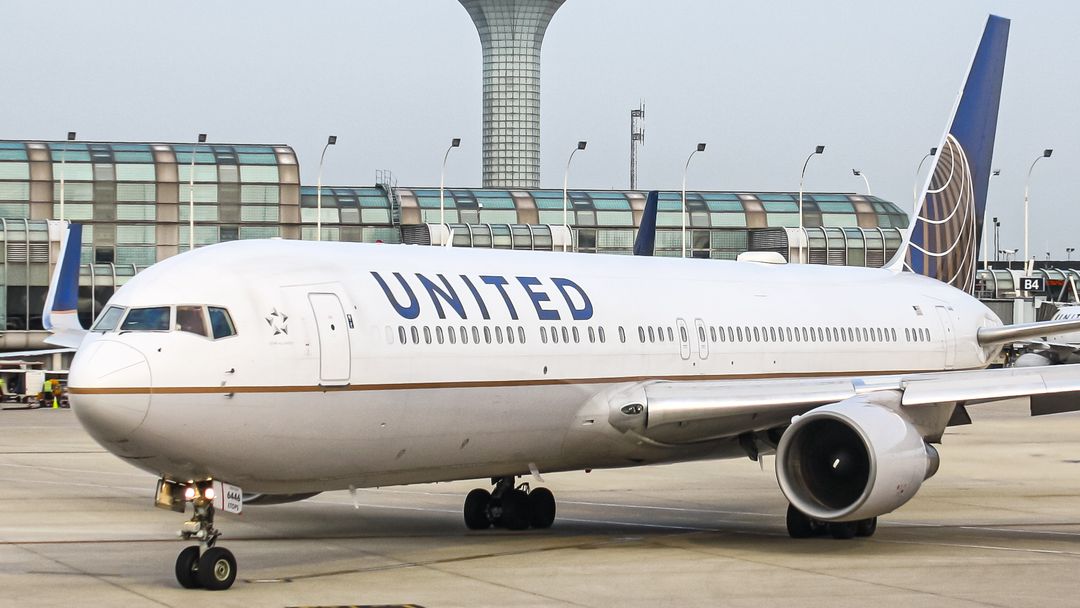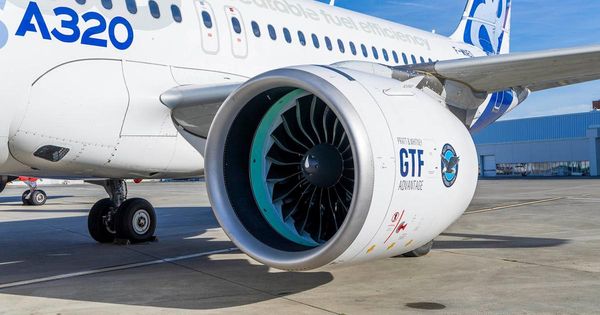The National Transportation Safety Board (NTSB) has released its preliminary report on a recent hard landing incident involving a United 767. The information shared in this report reveals some important insights into why this hard landing was most likely the aircraft's last.
Hard in the Paint
On July 29th, United Airlines Flight UA702 was on final approach to Houston Intercontinental Airport (IAH) concluding a flight from Newark Liberty (EWR). The aircraft operating was N641UA, a Boeing 767-300ER, and the oldest plane in the entire United Airlines fleet. Onboard were 202 occupants, of these 193 passengers and nine crew members.
The 767 made a hard landing on IAH Airport's Runway 26L, with the nose gear making especially hard contact with the ground. The NTSB's report noted that the First Officer was in command of the landing and the following transpired following the nose gear's rough contact:
"The airplane appeared to bounce, and he [First Officer] reacted by pulling aft on the control yoke, in an effort to keep the nose wheel from impacting the runway a second time. Subsequently, the speed brakes deployed, and the auto brakes engaged which resulted in a second bounce of the nose wheel."
According to the report, the nose gear's first bounce caused 1.4 times the weight of gravity to hit it. The second and third bounces each hit the nose gear with 1.6 times the weight of gravity. It was after these events that the Captain took over control and the aircraft later taxied safely to its gate.

Photos taken of the aircraft after parking at the gate show clear wrinkling and creasing in the fuselage thanks to the hard landing.
Interestingly enough, there are barely any contributing external factors that could have led to this incident. The NTSB reports that the weather at the time of the incident was fine with a five-knot and 220-degree wind. Furthermore, the crosswind was just 40 degrees for the Runway 26L approach.
Therefore, this information rules out bad weather or high wind as a key culprit in this incident.
A Troublesome 767
The aircraft involved in the incident, N641UA, is a 32.5-year-old Boeing 767, having been delivered brand-new to United Airlines back in April 1991. As it stands, Ship 6441 is not only the oldest 767 in the fleet but also the oldest plane in the entire United fleet.
The oldest airframes in United's fleet at the moment are 767-300s and Airbus A320s. A lot of these examples are over 30 years old and are in the process of retirement, as is the case for the A320s.
In fact, some of the United 767-300ERs are so old that they have worn five different liveries over the course of their careers at United. These planes were delivered brand-new wearing the "Saul Bass" livery, later donning the "Battleship Gray", "Rising Blue" (also called "Blue Tulip"), "Continental Globe", and now the "Evo Blue".

The age of these planes has been showing in various mechanically-related issues that have been plaguing the 767-300 fleet in recent history.
While this hard landing incident was not one of those issues, according to The Aviation Herald, N641UA has been involved in four separate incidents leading up to this:
Earlier this year, in March of 2023, the plane suffered an engine shutdown when climbing out of Houston bound for Rio de Janeiro. Fellow traffic had reported fire from Engine #1 however the crew reported that they did not receive any indication of a fire. The flight later returned safely to Houston.
One month prior, in February of 2023, the same 767 was en route from Houston to Munich and cruising at 36,000 feet. The crew decided to divert the aircraft to Newark upon receiving a "slats disagree" indication.
In June of 2018, N641UA was on final approach for Chicago O'Hare from London Heathrow when the crew noticed a problem with the gear. A go-around was initiated and after about a half-hour of holding, the plane landed safely in Chicago.
Three months earlier, in March of 2018, N641UA was flying from Chicago to London Heathrow. The flight was cruising at 35,000 feet when the crew received a "FUEL LOW" indication and noticed a fuel imbalance. While the "FUEL LOW" indication later cleared, the fuel imbalance continued to persist.
The flight diverted to Keflavík, Iceland, and had its fuel systems checked. Though no real issues were found, the 767 was refueled and subsequently continued its journey to London.
Is This the End?
Whether or not N641UA will return to service remains to be seen. At the time of writing this article, the 767 is still on the ground in Houston following the hard landing.
United plans to phase out its 767-300 fleet by 2030. The carrier continues to take delivery of more efficient Boeing 787s which will ultimately replace the 767s completely.

Given the age of the aircraft, it's unlikely that United will find it viable to repair N641UA. We can look no further than the example of a sister aircraft to make this prediction.
Last year, in April of 2022, N646UA, another United 767-300ER, was getting ready to be repainted in Roswell, New Mexico.
As the aircraft's "Continental Globe" livery was removed, paint crews found extensive corrosion in the 767's fuselage. The plane was just over 30 years old at this point and United found it not worth the trouble to address the corrosion issue.
Because of this, N646UA was ferried to Tupelo, Mississippi, and stored there, where it remains to this day, unlikely to ever return to service.

Considering the fact that the damage sustained by N641UA was rather significant, it's reasonable to assume this plane will be removed from service, quite literally bouncing its way to an impromptu but otherwise overdue retirement.
Why Fast Price Estimation Has Become Critical for Brokers and Clients » KLM Strengthens European Network with Three Scenic Routes » Citation C550 Fireball: Greg Biffle and Five Others Killed in Failed Emergency Landing at KSVH »
Comments (0)
Add Your Comment
SHARE
TAGS
NEWS United Airlines Boeing Hard Landing Houston Boeing 767 Houston Airport IncidentRECENTLY PUBLISHED
 GlobalX Secures Rare Authorisation to Operate Intra-Canada Charter Flights
Global Crossing Airlines Group, Inc. (GlobalX) has achieved a significant regulatory milestone in its northern expansion strategy. The Canadian Transportation Agency (CTA) has officially granted the Miami-based operator authorisation to conduct intra-Canada charter flights, a permission rarely extended to U.S. carriers.
NEWS
READ MORE »
GlobalX Secures Rare Authorisation to Operate Intra-Canada Charter Flights
Global Crossing Airlines Group, Inc. (GlobalX) has achieved a significant regulatory milestone in its northern expansion strategy. The Canadian Transportation Agency (CTA) has officially granted the Miami-based operator authorisation to conduct intra-Canada charter flights, a permission rarely extended to U.S. carriers.
NEWS
READ MORE »
 GTF Storage Crisis Deepens: 835 Aircraft Grounded as Pratt & Whitney Recalls Surge Post-Mid-Year
The operational crisis surrounding the Pratt & Whitney Geared Turbofan (GTF) engine family has reached a new peak. As of late Q4 2025, the number of stored jets powered by the PW1000G family has climbed significantly, highlighting a widening gap between maintenance capacity and the relentless pace of engine recalls.
INFORMATIONAL
READ MORE »
GTF Storage Crisis Deepens: 835 Aircraft Grounded as Pratt & Whitney Recalls Surge Post-Mid-Year
The operational crisis surrounding the Pratt & Whitney Geared Turbofan (GTF) engine family has reached a new peak. As of late Q4 2025, the number of stored jets powered by the PW1000G family has climbed significantly, highlighting a widening gap between maintenance capacity and the relentless pace of engine recalls.
INFORMATIONAL
READ MORE »
 Ryanair to Appeal $302 Million Italian Fine Over Alleged Travel Agency Restrictions
Ryanair has announced its intention to challenge a €255.8 million ($302 million) fine imposed by Italy's competition authority, which accused the airline of obstructing travel agencies and online booking platforms from selling its flights.
NEWS
READ MORE »
Ryanair to Appeal $302 Million Italian Fine Over Alleged Travel Agency Restrictions
Ryanair has announced its intention to challenge a €255.8 million ($302 million) fine imposed by Italy's competition authority, which accused the airline of obstructing travel agencies and online booking platforms from selling its flights.
NEWS
READ MORE »



